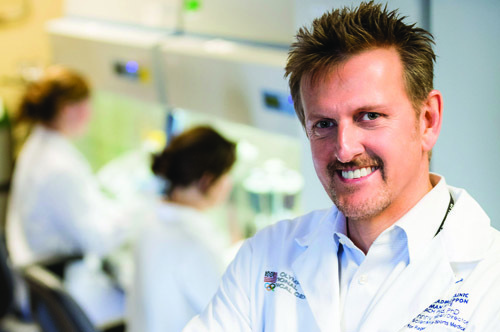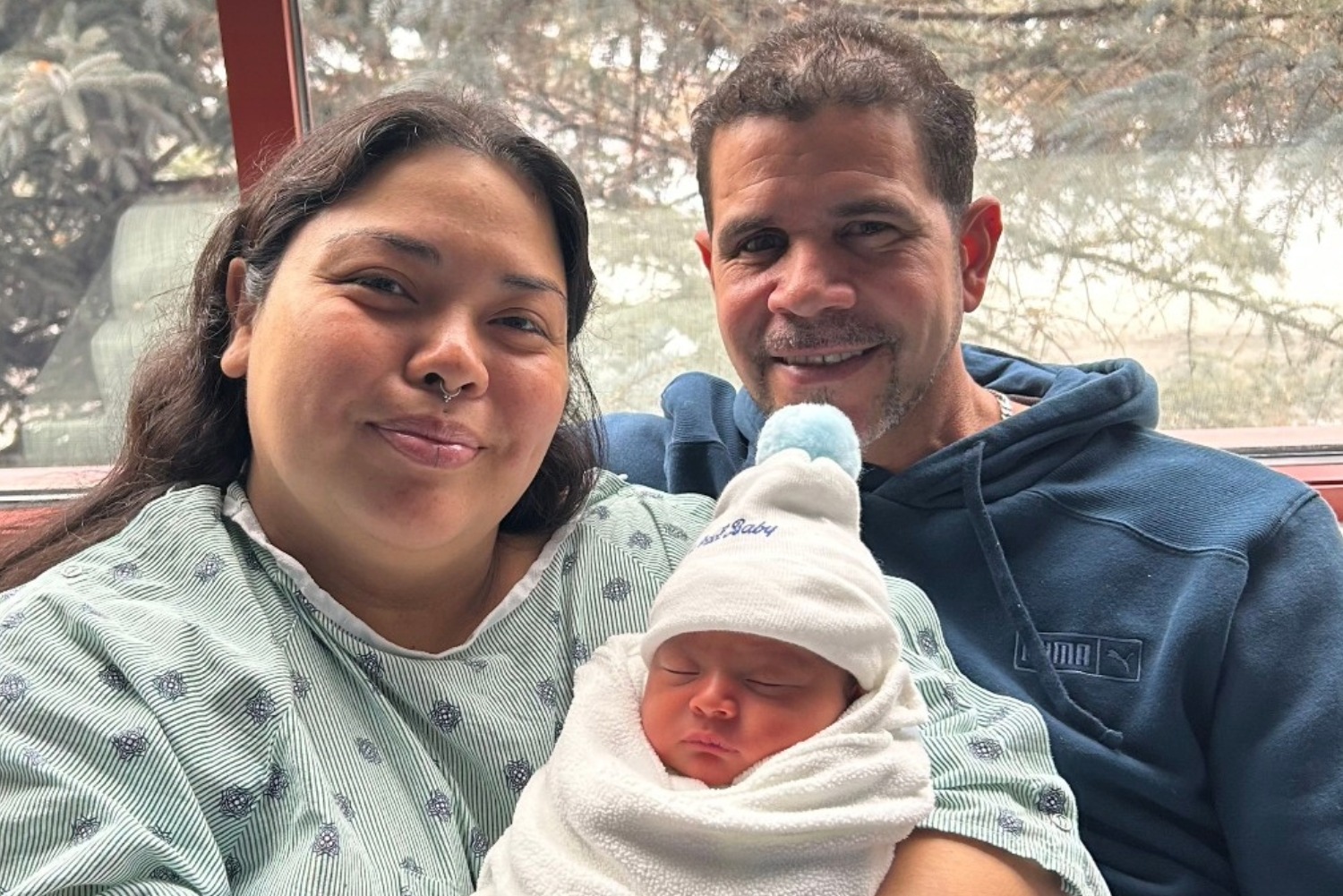News
The Future of Regenerative Sports Medicine

Imagine what orthopaedic sports medicine could be 10 years from now. What if a person's own stem cells could be injected or combined with exercise to help patients delay or avoid joint replacement - or heal faster-or enable muscles to heal stronger - or minimize scarring following surgery?
Researchers at the Steadman Philippon Research Institute (SPRI) don't think you will have to wait 10 years. The future of regenerative sports medicine is now and it's happening right here in Vail. These advances are in development, and the person recruited by Dr. Marc Philippon to head the Center for Regenerative Sports Medicine at SPRI is Johnny Huard, Ph.D.
"The opportunity to accelerate our pioneering advances in regenerative sports medicine and stem cell research with Dr. Huard as our chief scientific officer is exciting and potentially life changing," says Dr. Philippon, managing partner of The Steadman Clinic and co-chairman of SPRI.
"As surgeons, we perform and repair with every procedure. We are also focused on taking the next step to add biologics to a procedure that will help the healing process, recovery, and keep all of us active."
UNIQUE PARTNERSHIP
Dr. Huard joined SPRI on May 1, 2015. Originally from Quebec, he is the former Vice Chair for Musculoskeletal Cellular Therapeutics at the University of Pittsburgh and is world-renowned in the fields of stem cell research and regenerative medicine.
His appointment represents a unique partnership between SPRI and the University of Texas Health Sciences Center. His 24-person research team rotates between Houston and Vail, conducting basic science and applied research in both locations.
"At SPRI, we are testing our premise that transplanting a person's own stem cells won't make that person younger, but will delay aging-related disease and conditions such as osteoarthritis and osteoporosis," says Dr. Huard. "In the process, we are learning how to make healing and recovery better."
THE SPRI CONNECTION
"I became interested in The Steadman Clinic because of its excellence in research and because I knew Dr. Philippon when he was at the University ofPittsburgh," says Dr. Huard. "SPRI has always been focused on evidence-based medicine and clinical translation. With that foundation in mind, Dr. Philippon is moving the research into regenerative and translational medicine and making tremendous advances in the field of orthopaedic surgery.
"The Institute was already doing work with platelet-rich plasma and cell biology. The physicians were the premier orthopaedic surgeons in the world, and they were putting themselves on the edge because of their innovative approaches."
BENCH-TO-BEDSIDE CAPABILITY
Dr. Huard says another factor in his decision to join SPRI was its capacity to rapidly take a new therapy from the research bench to the patient's bedside. He cites a clinical trial with an anti-scarring agent called losartan as an example.
Dr. Philippon was preparing to do surgery, and Dr. Huard suggested that (with the patient's approval) he prescribe losartan after the surgery. He did and the patient responded well.
"That kind of bench-to-bedside speed would not have been possible at a larger institution," says Dr. Huard.
FOUR INVESTIGATIONS
Dr. Huard's initial research at SPRI involves four investigations. The first evaluates the effects of exercise and neuromuscular stimulation/massage on tissue repair.
The second is looking at delaying joint degeneration through the injection of adult stem cells and other biologics. His team wants to find the answer to the question, "Can stem cells be the ultimate body repair kit?"
The third study is a collaboration between Dr. Huard, Dr. Philippon, and Dr. Robert LaPrade, who have injected platelet-rich plasma (PRP) into selected hip and knee patients to help them heal faster. The physician/researchers believe that combining PRP with the patients' stem cells will significantly accelerate the healing process.
The fourth initiative is measuring the effects of anti-scarring agents on tissue repair. Significantly reducing scarring could create a dramatically more satisfying and faster recovery.
PRACTICAL APPLICATIONS
"We may be within a year for some of the advanced PRP applications," says Dr. Huard. "With stem cells, we have already seen positive results in 12 patients to repair cardiac tissue and 400 patients to reduce bladder dysfunctions. Because of advances in other areas, we may be able to go faster in sports medicine."
Dr. Huard's timetable for the Regenerative Sports Medicine Laboratory at SPRI is specific. "By the end of the first year, we want the lab to be well funded, to be fully functional, and to have produced publications to show people what we are doing." (The lab became fully functional in October 2015.)
"We want people around the world to know about treatment options for orthopaedic injuries and conditions," says Dr. Huard. "Based on our interaction with other departments at SPRI, we will be able to tell patients what works, what doesn't, and explain the reasons why."
LOOKING AHEAD: DELAYING AGING, EXTENDING LIFE
Life expectancy is not set in stone. Scientific innovation has contributed to an increase from 47 years in 1900 to nearly 80 years today. The research being conducted at SPRI has the potential to accelerate that trend.
In the long term, Dr. Huard envisions people having the opportunity to harvest their own stem cells, preferably at a young age. The cells could be frozen, stored and then re-injected later to help those people delay aging-related diseases, enjoy a better, active, stronger life and get the best treatment when they need it. Although it will take time to perfect, the procedure might not only slow the aging process, but it could extend life expectancy well beyond 100 years.
Dr. Huard brings an unparalleled record of achievements, publications, grants and awards to the Steadman Philippon Research Institute. Dr. Philippon, Dr. Huard and their colleagues at SPRI represent the future of regenerative sports medicine to the rest of the world, and it's starting in the Vail Valley.
"At SPRI, we are testing our premise that transplanting a person's own stem cells won't make that person younger, but will delay aging-related disease and conditions."
JOHNNY HUARD, PH.D.
For more information, please contact The Steadman Philippon Research Institute
sprivail.org | (970) 479-9797
More News
-
New!
More

First Baby of 2026
It's a boy! Vail Health Hospital welcomed the first baby born in 2026 on January 5 at 7:48 p.m.
-
New!
More

Screening Secrets: What Every Man Should Know About Prostate Cancer Screening
Prostate cancer is the most common type of non-skin related cancer in men, and it is the second leading cause of cancer-related deaths in men within the United States, behind lung cancer. Fortunately, if caught early, prostate cancer remains highly treatable and curable with minimally invasive procedures.
-
New!
More

Unplug to Recharge: Why a Digital Detox Is the Real Power Move for 2026
Our phones promise connection, convenience and control, yet most of us feel more scattered, stressed and sleepless than ever. The constant pings, scrolls and notifications have rewired our brains for distraction. The fix? Not abandoning technology altogether, but reclaiming balance.





